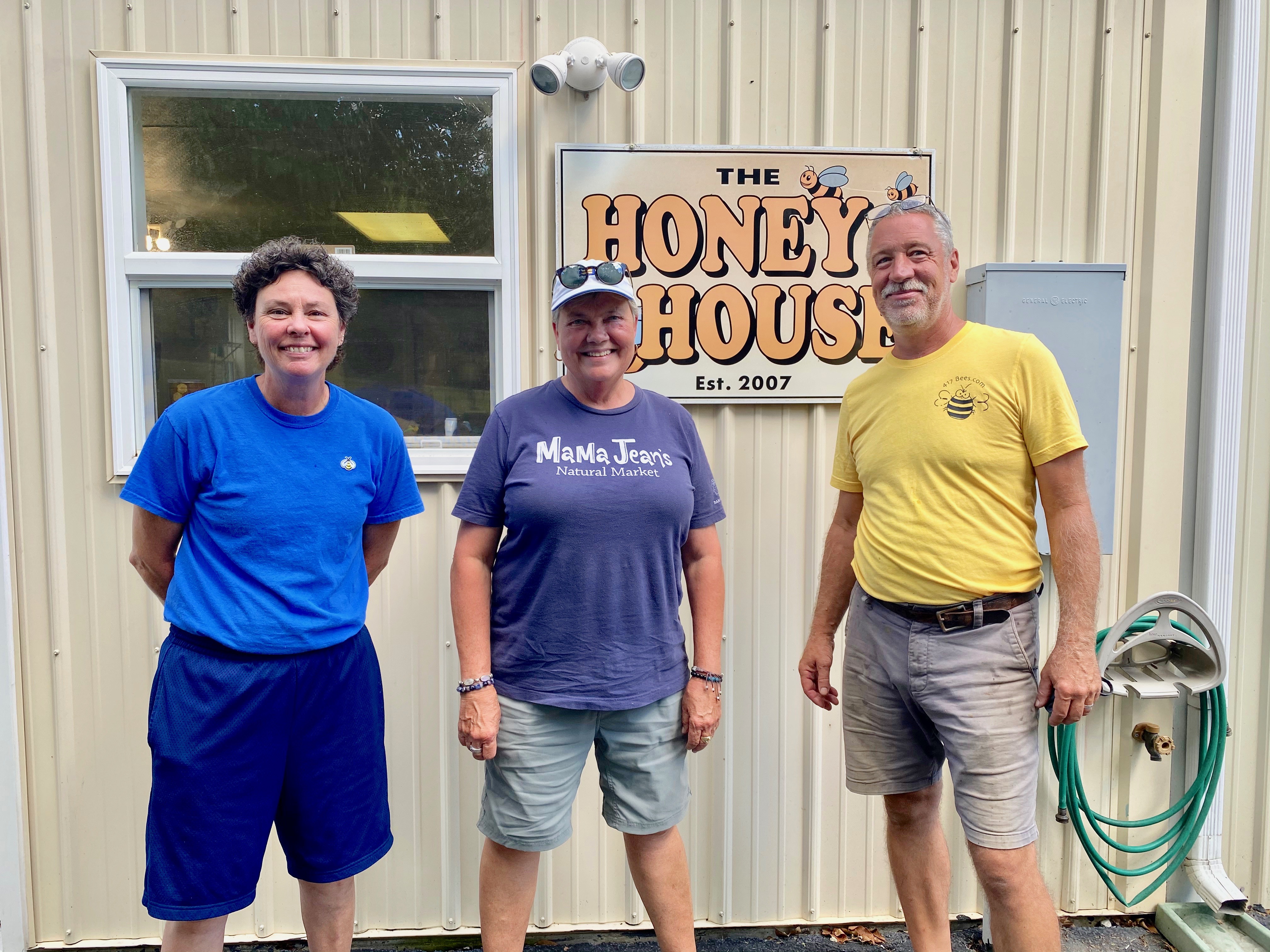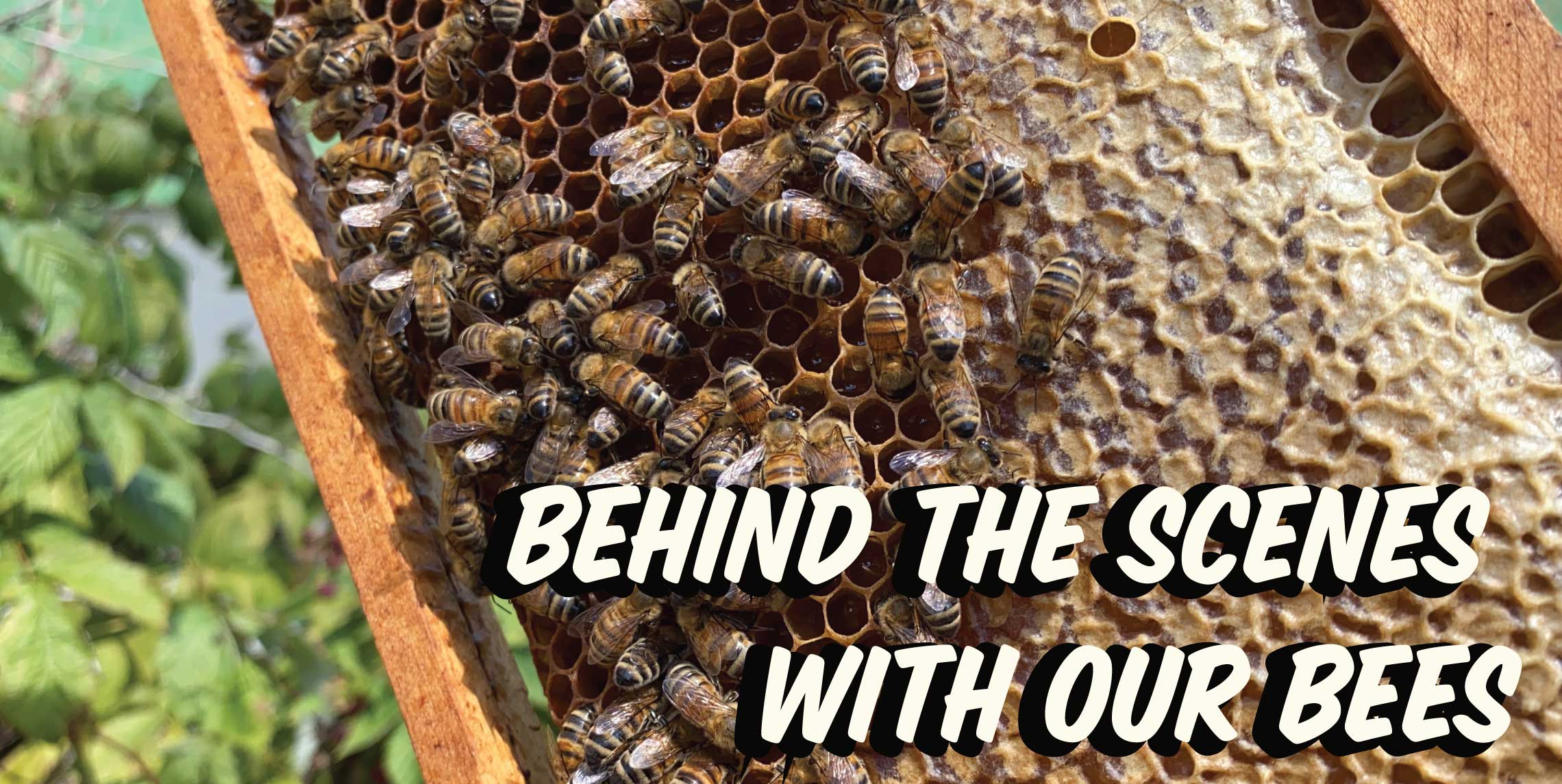
It’s late August, and even the morning hours won’t let you escape from the sun’s scorching rays. Bees buzz in the secret garden at MaMa Jean’s East Sunshine location. Hidden amongst the flowers and overgrown lavender, this garden harbors a little known secret: three honey bee hives. Most days the bees go quietly about their business, pollinating plants and turning nectar into honey. However, today is different. The hives are ready. Today is an exciting day for beekeepers. Today the honey will be harvested.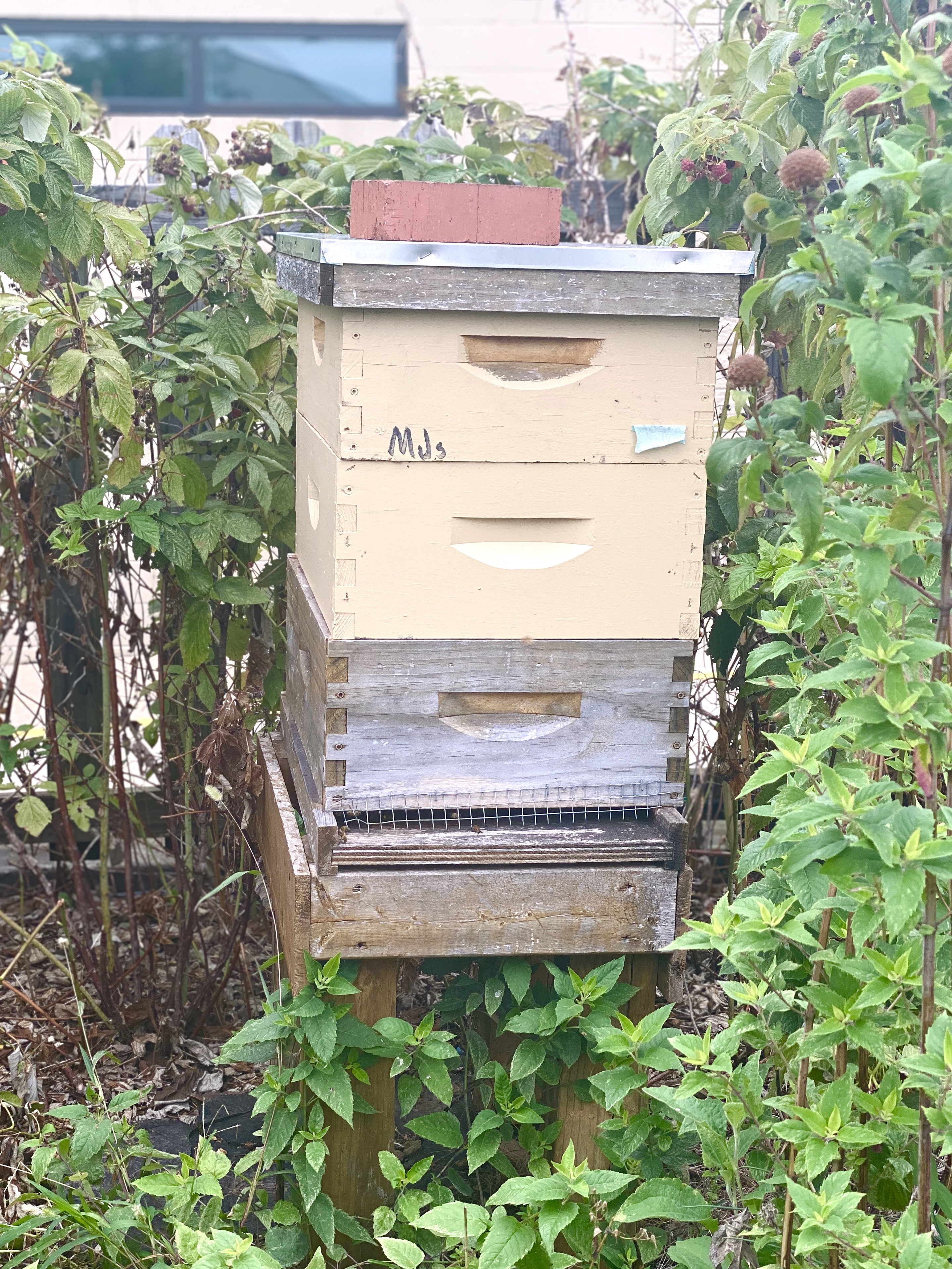
Harvesting honey is the sweetest task in all of beekeeping. This delicious and sticky reward is a culmination of all the hard work that goes into maintaining a healthy hive. Since April’s first blooms, the honeybees have been diligently collecting pollen and nectar to make honey. Foraging within a 5 mile radius from their hive, the honey from our MaMa Jean bees is truly as local as it gets in Springfield!
Honeybees are genetically programmed to hoard more honey than needed for the long winter months. It is only out of this surplus of honey that MaMa Jean’s will be harvesting. To harvest the honey, our professional beekeeper, Jeffery Maddox, comes to lend a hand and show us how it’s done.
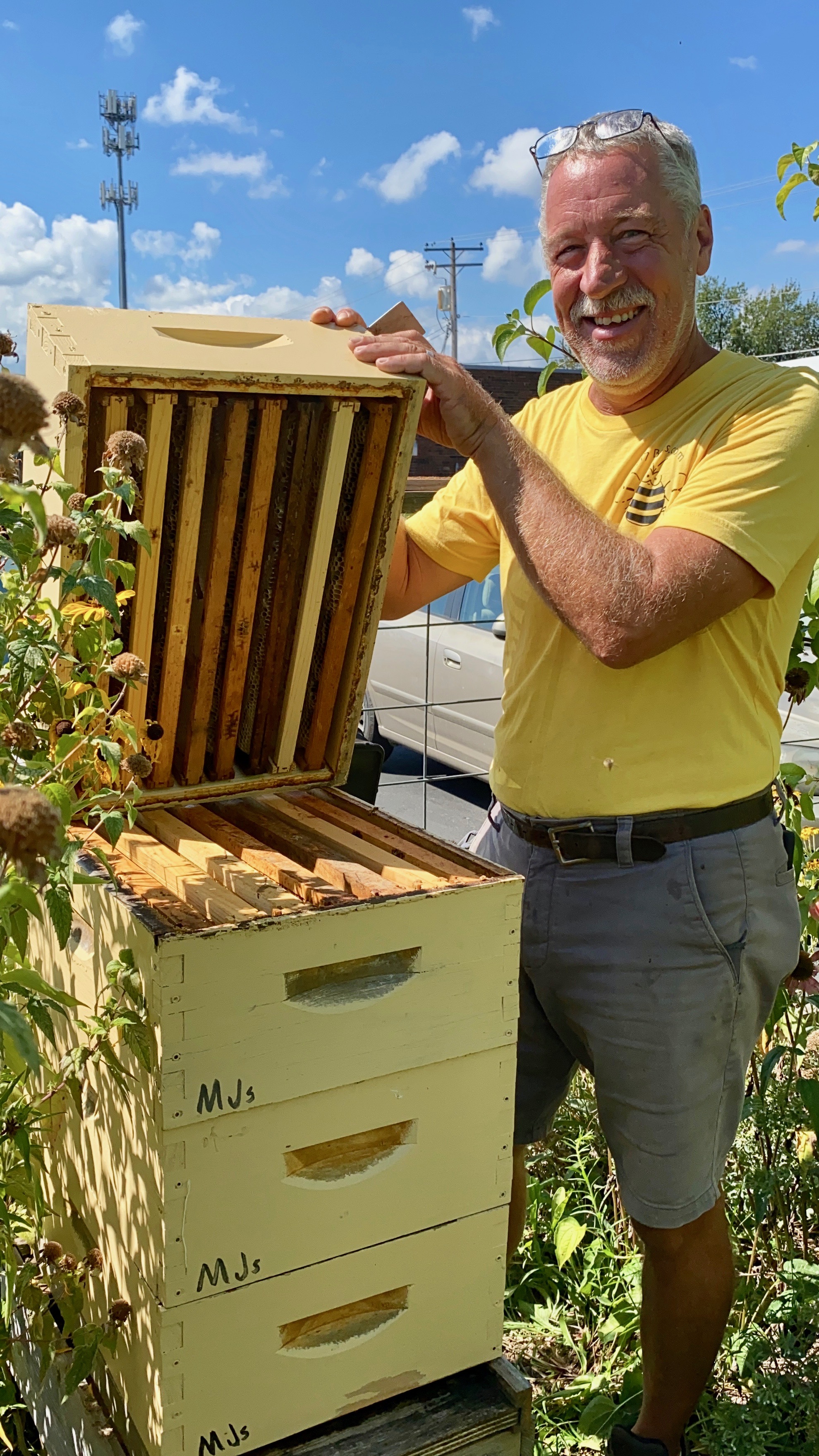 “Beekeeping is all about space management.” says Maddox. His job is to make sure the bees have enough room to make honey without becoming too crowded. Maddox has been a professional beekeeper since 2008 and served as President of The Beekeepers Assocation of the Ozarks (from 2014-2016). He tends to over a hundred local hives and makes sure each colony has whatever it needs to grow and prosper. His busiest season is April-August, though he checks on the bees year round.
“Beekeeping is all about space management.” says Maddox. His job is to make sure the bees have enough room to make honey without becoming too crowded. Maddox has been a professional beekeeper since 2008 and served as President of The Beekeepers Assocation of the Ozarks (from 2014-2016). He tends to over a hundred local hives and makes sure each colony has whatever it needs to grow and prosper. His busiest season is April-August, though he checks on the bees year round.
Each hive at MaMa Jean’s is made up of boxes, or honey supers as they are correctly called. Each honey super contains frames for the bees to build their wax foundation on. As the bees fill the frames with honey, more honey supers may be placed on top of the hive to give the bees more room. Maddox will make sure to leave 40-50% of the honey behind for bees to feed on throughout the winter. 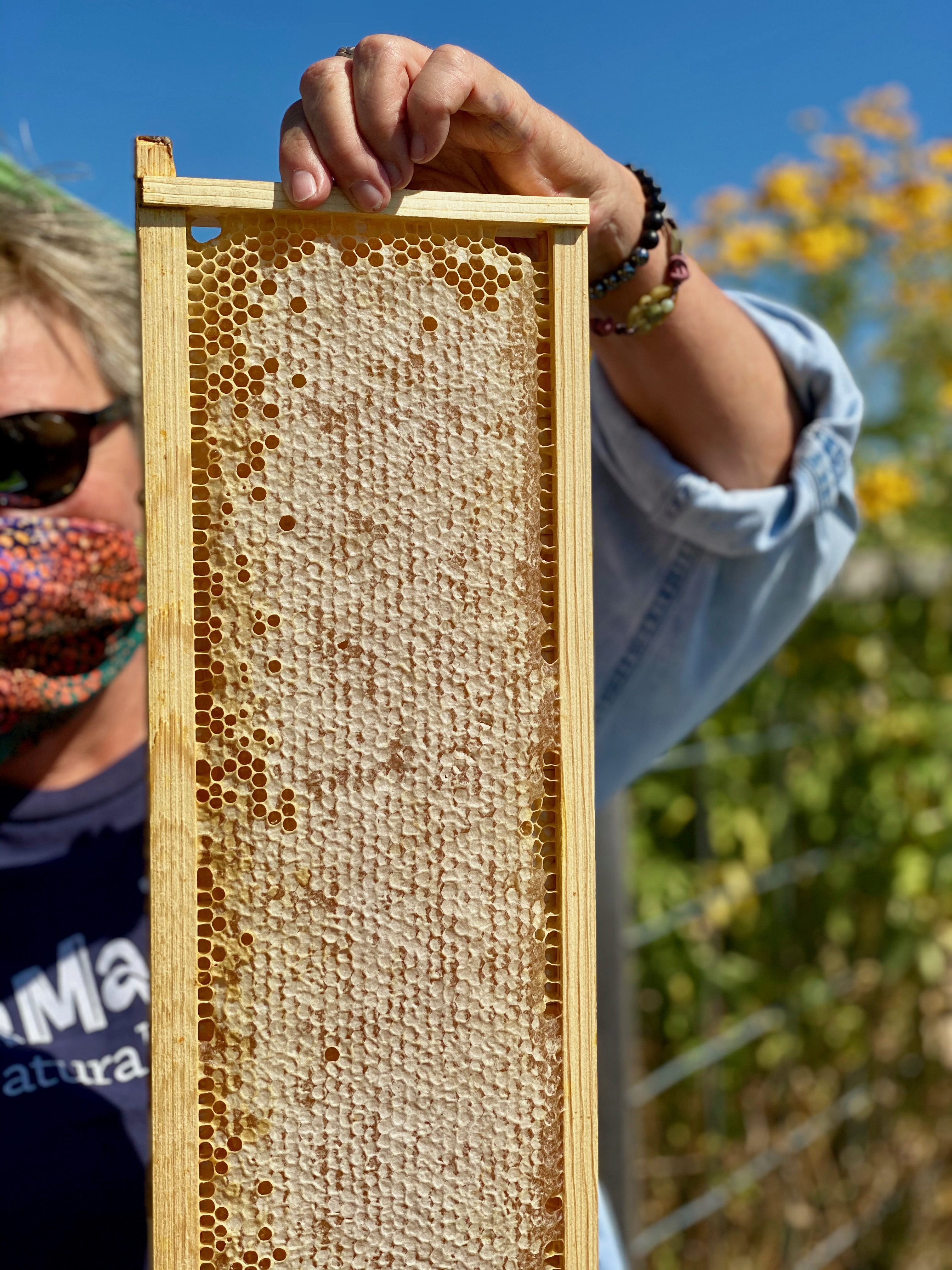
Maddox uses a small smoker to gently puff smoke into the air, calming the bees. To harvest honey safely, the bees need to move away from the honey. He sprays a natural fumigant on a cloth board and places it on top of the hive. The smell drives the bees to the bottom of the hive, leaving the top supers bee free and ready to remove.
Carefully Maddox pulls a frame from the super. He shows how the bees have created a wax comb, where they add honey to fill the comb and cap it with wax once it’s filled. Fascinating creatures, these winged stingers. Maddox remarks:
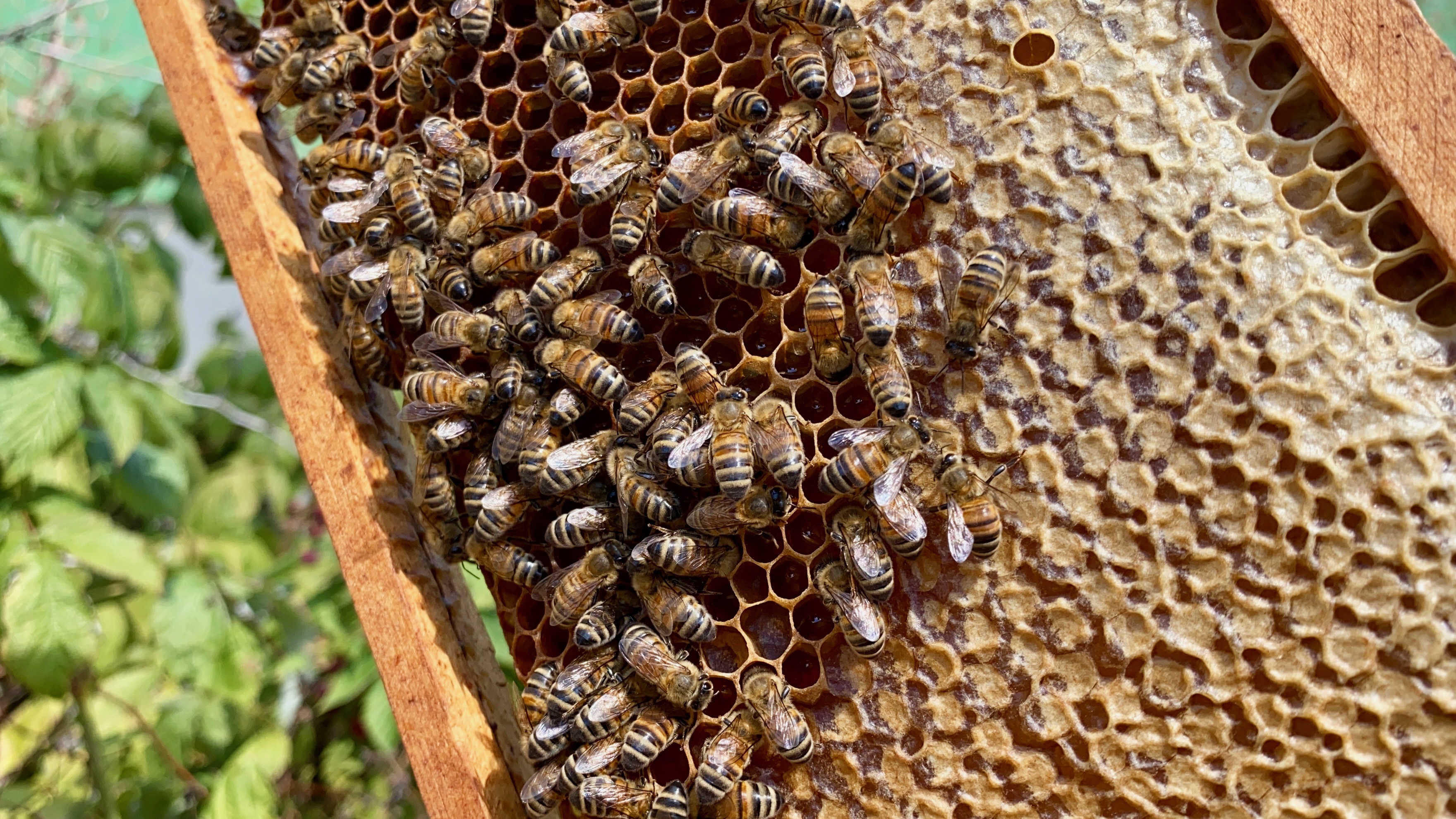 “You’ve got 40,000 bees all adding wax to this comb. But nobody is directing the operation. It’s like telling 40,000 people to build a house, each one has a brick but no one tells any of the 40,000 people what kind of house it is. You don’t have anyone directing this whole process and yet it comes out the same every single time. That is what I find fascinating and I haven’t found anyone who has a description for this kind of work. You’ve got 40,000 bees, all adding to the comb at the same time, with no direction ..how does that work?”
“You’ve got 40,000 bees all adding wax to this comb. But nobody is directing the operation. It’s like telling 40,000 people to build a house, each one has a brick but no one tells any of the 40,000 people what kind of house it is. You don’t have anyone directing this whole process and yet it comes out the same every single time. That is what I find fascinating and I haven’t found anyone who has a description for this kind of work. You’ve got 40,000 bees, all adding to the comb at the same time, with no direction ..how does that work?”
MaMa Jean’s co-owner, Diana Hicks helps Maddox remove the full honey supers and carry them to the truck. Maddox covers the supers with a cloth that has a wire funnel, to allow any remaining bees a chance to fly back to their hive. Once the supers have been removed Hicks and Maddox drive out to Beecharmer Farms, where professional beekeeper, Valorie will help us extract the honey.
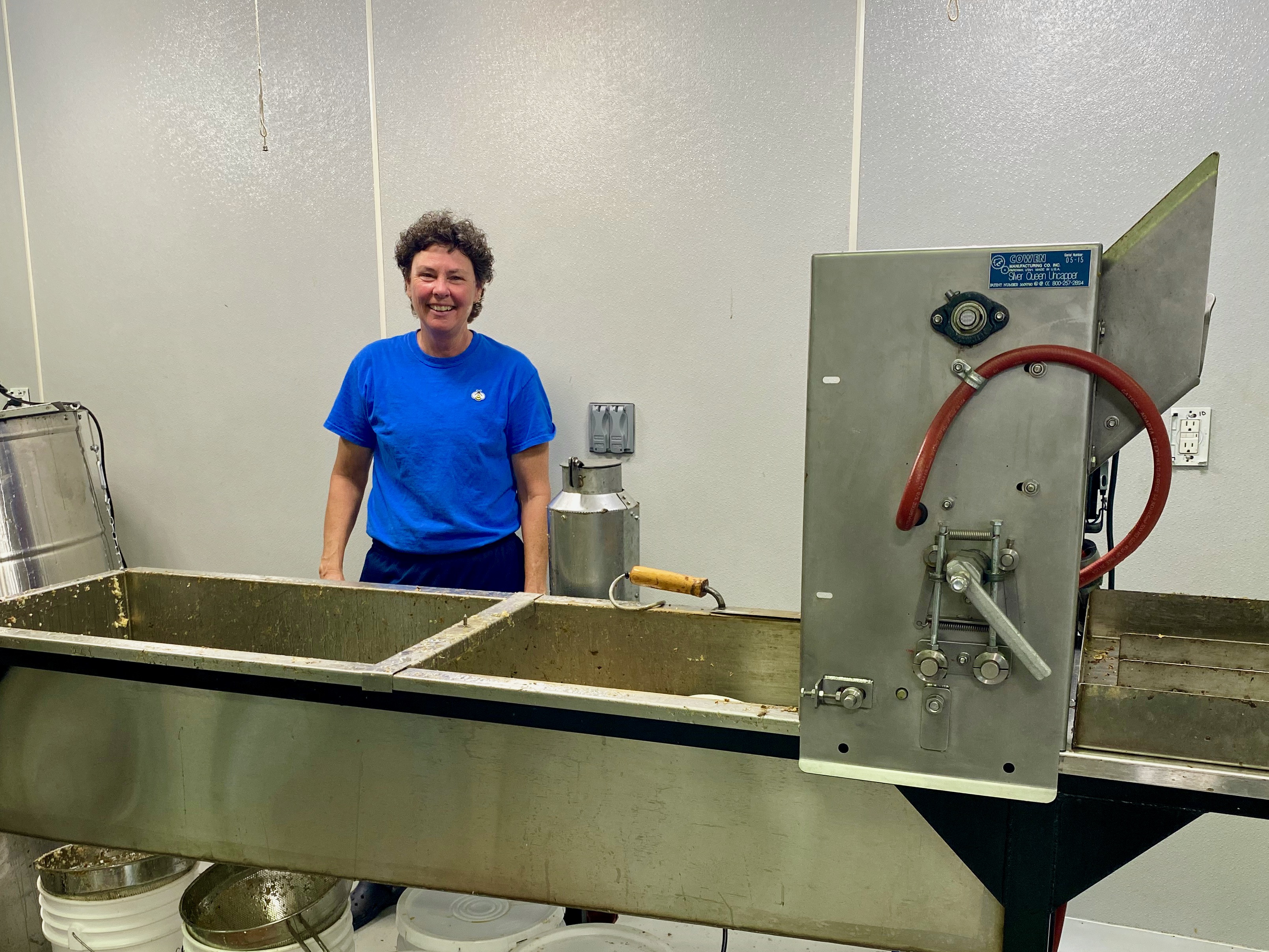 Valorie (or Val, as her friends call her), is the owner of Beecharmer Farms located just North of Springfield near Ebenezer, MO. Val is an avid beekeeper and wonderful mentor to many starting beekeepers in the area. She’s been operating out of her “Honey House” since 2007 and helps local beekeepers extract their honey.
Valorie (or Val, as her friends call her), is the owner of Beecharmer Farms located just North of Springfield near Ebenezer, MO. Val is an avid beekeeper and wonderful mentor to many starting beekeepers in the area. She’s been operating out of her “Honey House” since 2007 and helps local beekeepers extract their honey.
Val calls her automated un-capper machine “the cadillac” of uncapping. This machine quickly removes the wax caps from each frame. The knives are heated so that the honey stays warm enough to keep things flowing. “It’s a sticky situation” says Diana Hicks as everyone gets to work.
Maddox and Hicks run quality control, taking each frame by hand after it goes through the machine and manually uncapping any cells that have been missed. All the honey is collected in a tilted tray that filters the honey into what’s called a “china cap” that filters out any wax chunks. Not a single drop of this liquid gold goes to waste!
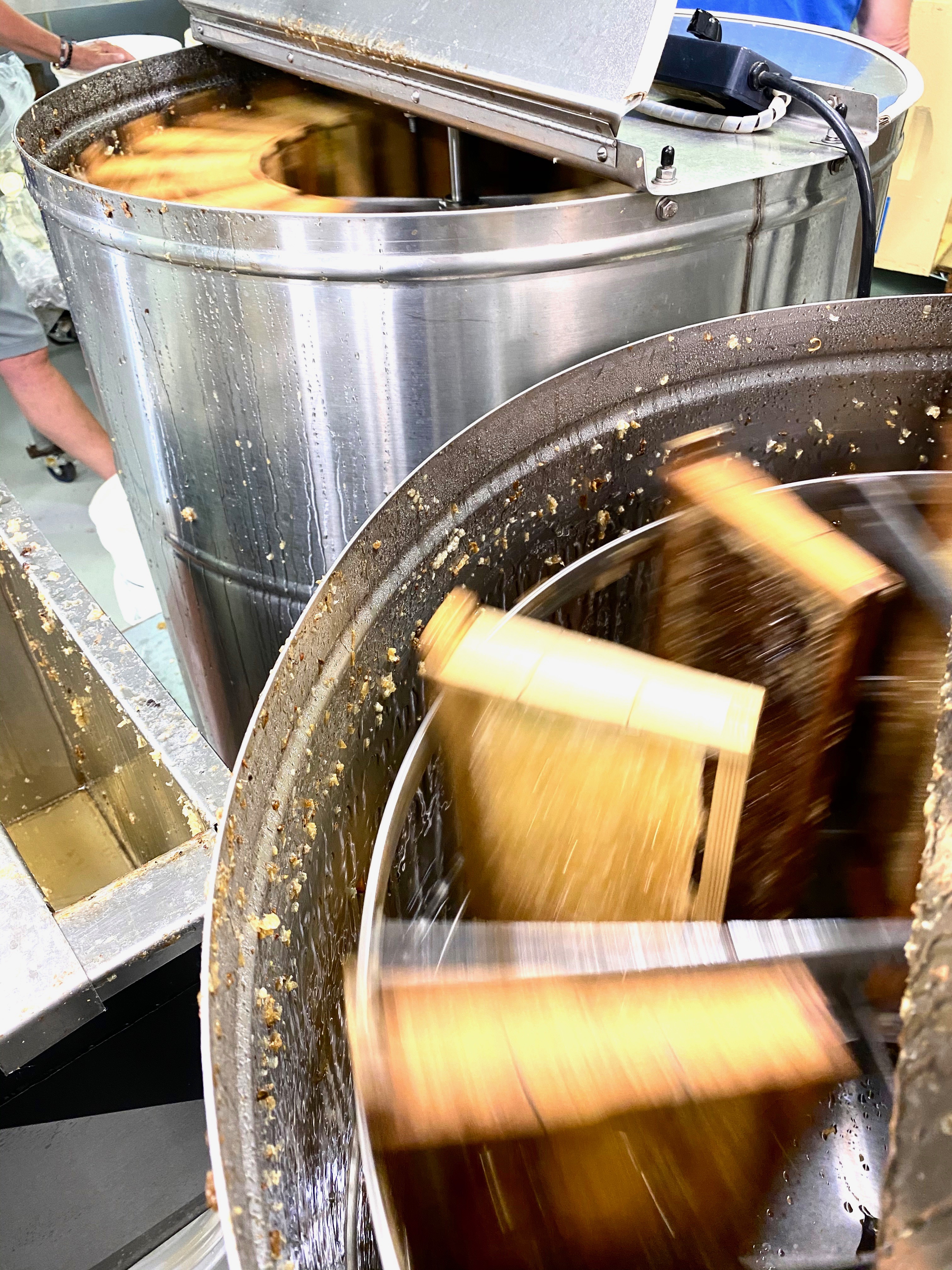 Val has two 20 frame extractors. Each uncapped frame is set into the extractor before Val starts the machine. Centrifugal force causes the honey to splatter out to the sides of the tank. The honey drips to the bottom of the tank where it starts to steadily ooze through a filter and into a 5 gallon bucket.
Val has two 20 frame extractors. Each uncapped frame is set into the extractor before Val starts the machine. Centrifugal force causes the honey to splatter out to the sides of the tank. The honey drips to the bottom of the tank where it starts to steadily ooze through a filter and into a 5 gallon bucket.
“Honey is a lot like wine” says Maddox, “even if you get the same wine from the same winery, it differs from year to year. Bees are always foraging on different blooms, and that produces different honeys.” The beekeepers explain how batches of honey taste differently and have unique colors and tasting notes based on the hive and its location.
B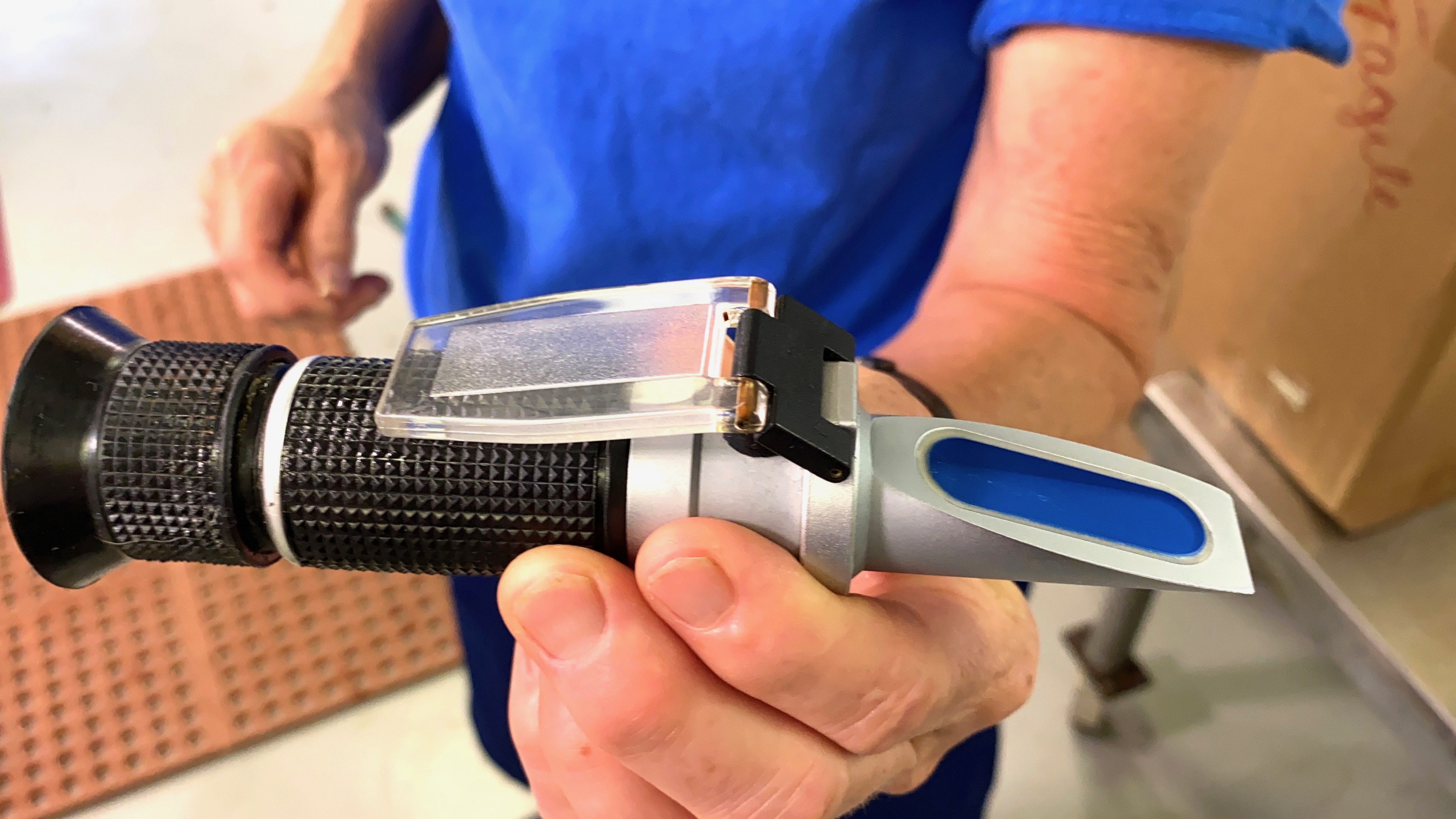 ack in the hive the honeybees have used their wings to dehydrate the nectar into honey. In order for the honey to be shelf stable and not ferment the moisture content needs to be 18% or below. A honey refractometer is used to measure the moisture content of the honey. Our honey, of course, passes the test with flying colors because our MaMa Jean’s bees know what they’re doing!
ack in the hive the honeybees have used their wings to dehydrate the nectar into honey. In order for the honey to be shelf stable and not ferment the moisture content needs to be 18% or below. A honey refractometer is used to measure the moisture content of the honey. Our honey, of course, passes the test with flying colors because our MaMa Jean’s bees know what they’re doing!
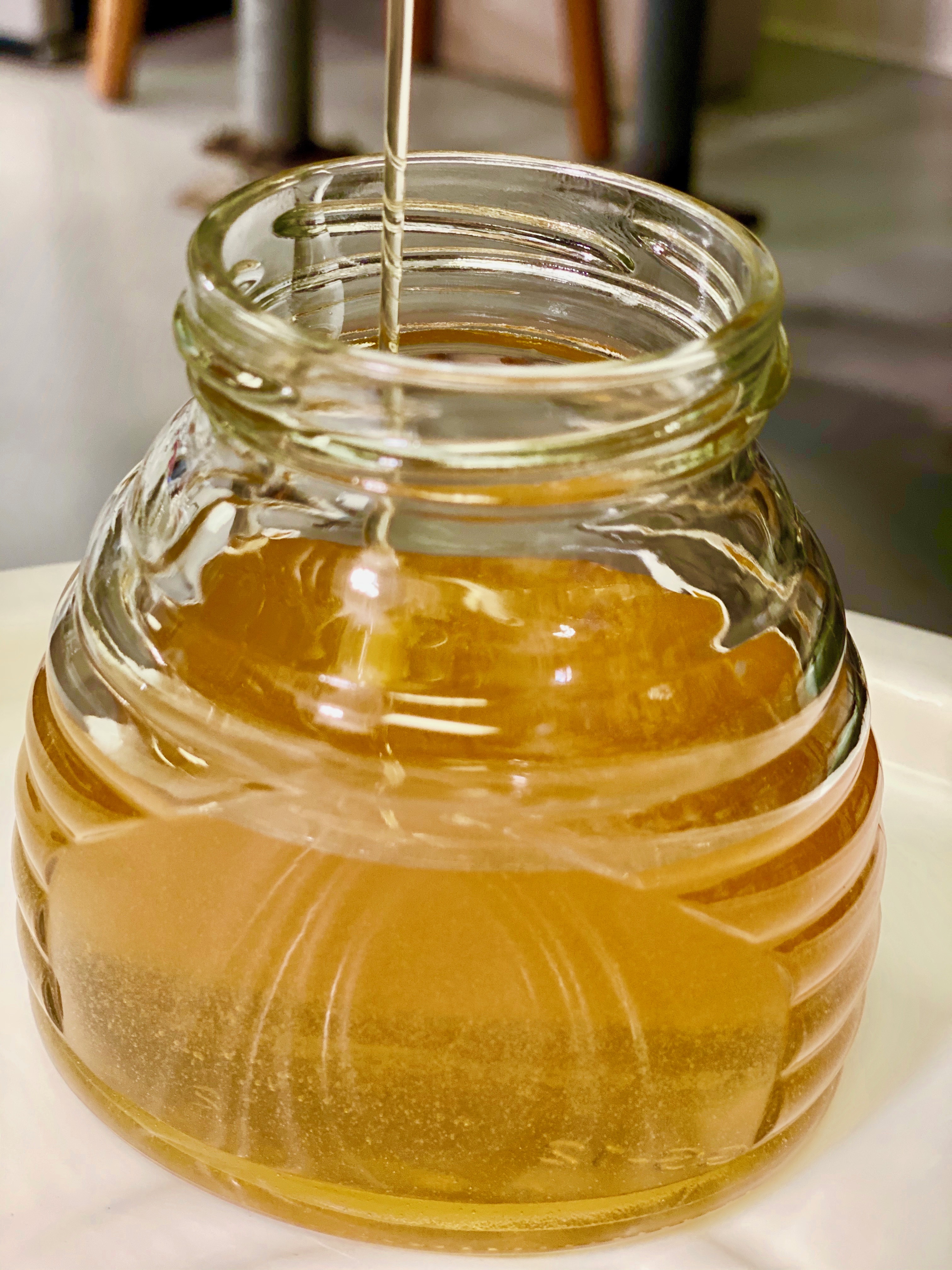 As Hicks herself pours the honey into each bottle, the satisfaction of a job well done floods the room. It’s been a delightful and educational afternoon in the honey house and we’re so thankful to Maddox and Val for their help and expertise. With boxes full of honey jars, we draw an end to this season's honey production and extraction.
As Hicks herself pours the honey into each bottle, the satisfaction of a job well done floods the room. It’s been a delightful and educational afternoon in the honey house and we’re so thankful to Maddox and Val for their help and expertise. With boxes full of honey jars, we draw an end to this season's honey production and extraction.
Stop by our store today to pick up your own bottle of BEEver Honey! We’re all a buzz with excitement about this third release of raw, pure small batch honey. Grab a few jars for yourself and as gifts for friends and family ...while supplies last!
